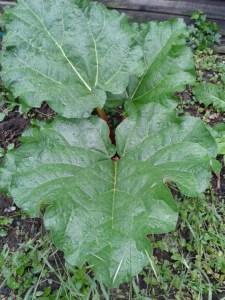In my ever conquering quest to get more people to grow their own fruit and veg, I wrote a series of posts last year, on individual veggies, fruits and herbs to show you just how easy some are to grow.
The series, of five, which delved into runner beans, parsley, strawberries, blueberries and radishes were all chosen because all five really are extremely simple to grow, don’t take much time looking after and even more importantly are delicious to use in cooking or to eat by themselves.
Now we’re in the midsts of a new gardening year I thought I’d create a new series.
Five more posts on fruit and vegetables that are just really simple to grow and can be grown well in the smallest of places. I’ve grown every single veg/fruit or herb that I post about which means I can guarantee they are easy to grow! It also means that I won’t be posting on lettuce, broccoli, nor redcurrants as I have not been successful with those.
If you want to give any of the choices a go please let me know, and be sure to post your experiences of growing them right below the post, I’d really like to hear from you.
Week 1 – Rhubarb
Some might say that rhubarb is an acquired taste. It’s certainly the most tart of fruits to have as an after dinner pudding, but there is sits firmly on our British menu as one of the more traditional favourites.
If you’ve ever eaten cooked rhubarb you’ll know the sharp taste it gives but is the perfect accompaniment to custard. It can be made into a crumble or a pie
Why grow Rhubarb?
Given the amount of sugar required to make rhubarb palatable you wouldn’t think it was a very healthy crop to grow. However you might be surprised to learn that a portion of rhubarb has 35% of the recommended daily calcium intake and 13% of vitamin C. On top of that it can help to lower cholesterol and if eaten in quantity can even be a laxative which is especially useful if you have trouble going to the toilet.
The other great thing about rhubarb is it that harvesting goes on and on and on – from April to October, which is pretty long for any fruit. Not only that but if you get a sudden glut, the stalks can be cooked and frozen and kept for at least another three months giving you summer fruit even in the depth of winter.

This is our rhubarb
So, how to grow rhubarb?
- You can either buy it in a pot, from your local garden centre (usually about £2-4), all year round
- You can buy dormant crowns between autumn and spring, from garden centres, pound shops, supermarkets.
- It is possible to grow rhubarb from seed but it’s a bit faffy and adds another year on to the time it’ll take you to harvest the stems.
I’d either opt for the pot plant or the crowns.
Find a nice sunny spot where the plant will get at least 3 hours of sun during the summer months. Dig a hole and either place the crown in the hole and cover up, or add the potted plant to the hole and soil up around the plant. Water well and leave.
No pruning, no feeding and no other regular maintenance required other than to keep watering the plant in warm weather and start picking the stalks when they are big enough.
Now, this is where the important bit comes in.
Don’t eat the leaves. And…
If you’re planting the crowns then the rhubarb can’t be harvested the first year. Leave it to grow and die back naturally the first year so it puts all it’s energy into being the best plant it can be for the second year. It’s very tempting to pull a couple of stems the first year but this will only make the plant work harder in places it shouldn’t be. Leave it be and you’ll be much rewarded come the following summer.
Pick little and often. One fully grown 2 yr old plant is sufficient for two adults throughout the summer but just be sure not to pick too many stems at once else the plant will have trouble recovering.

Even in November the plant is still looking healthy.
Pests and Diseases – Just the two – Slugs/snails which will happily much through all the green leaves, and new stems causing the shoots to look rather sorry for themselves. Eradicate by keeping the surrounding area free of slug/snail homes and go out after dark to pick as many off the plant as you can. The other problem is aphids who love nothing better than the delicious taste of new shoots. Use organic soap spray or eradicate as many as possible using your fingers and thumbs.
Down the line
Once you’re rhubarb is settled in it will grow vigorously. Being a perennial means it’s well suited to frost and snow so don’t worry about the weather hitting it after Autumn. It will die down naturally and pop up again the following spring.
________
So what did you think? Was that useful at all or do I waffle too much? More importantly – does it make you want to have a go at growing rhubarb?
Cover photo courtesy of Patrick
